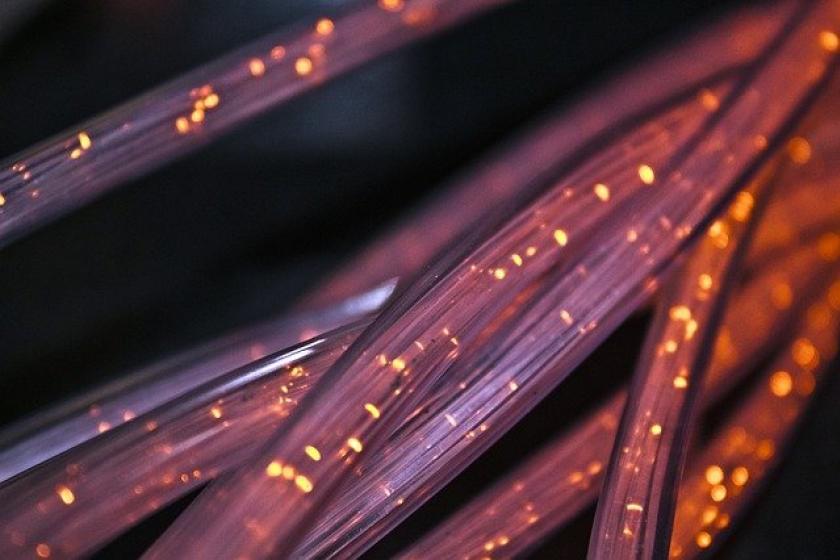Out of the Box Infrastructure Connectivity Options
There are plenty of physical layer connectivity options available these days. Be sure to consider all of them before your next upgrade.
September 17, 2021

When it comes to connecting networks and devices throughout buildings and campuses, the popular connectivity opinion has always been to upgrade existing cable plants with similar types of cabling – but using the latest upgraded versions to achieve better performance. For example, CAT 5 cabling is usually upgraded to CAT 6A, and OM1/OM2 multi-mode fiber is often upgraded to OM3 or OM4 specifications.
While this methodology is perfectly acceptable in 2021, it’s important to also research new and emerging connectivity options that may end up being a better fit for your organization’s needs. Let’s look at four “out of the box” connectivity technologies that you may want to consider for your next physical plant project or upgrade.
Wireless as a backhaul
When connecting floors or buildings to a central network, copper or fiber optic cabling is used almost exclusively. In most cases, physical cabling provides the speed and reliability that most organizations demand. That said, the cost to run new cabling in new or existing buildings has escalated rapidly over the past decade or so. Additionally, running cabling in certain types of buildings is difficult, if not impossible, to achieve.
Fortunately, wireless technologies in the 60GHz spectrum have advanced to the point where data can be transported with high reliability at multi-gigabit speeds. For businesses looking for a flexible and low-cost alternative to physical cabling backhaul links, wireless is something that should seriously be considered.
Fiber to the desktop (FTTD)
The concept of FTTD has been around for years. However, most IT departments early on didn't see the benefit of deploying more expensive fiber in lieu of twisted-pair copper cabling. FTTD in 2021 makes far more sense today than it did even five years ago for a number of reasons that are negatively impacting physical copper plant deployments inside offices, cubicles, and wherever IoT devices need to be located. These reasons include:
An increase of electromagnetic interference in the office due to a significant rise of PoE endpoints and IoT sensors being deployed throughout buildings. This interference can negatively impact performance for connections that do not require PoE. Fiber is immune to electromagnetic interference and thus is better suited in these types of environments.
Newer copper cabling (CAT 6A and higher) is thicker and heavier compared to older cabling. For cable runs that do not have much room in ceilings or horizontal cable trays, fiber is a much lighter and smaller alternative.
Standard copper Ethernet interfaces can transport data up to 100 meters in length. Fiber, on the other hand, can transport data many times further depending on the fiber transceiver in use. Because of this, network closets that run FTTD can be consolidated to save on hardware, maintenance, and electricity costs.
5G LAN
Businesses are increasingly relying on their Wi-Fi network to transport mission-critical data from PCs, phones, tablets, and wireless IoT/IIoT sensors. This increase in usage, along with growing interference in the unlicensed 2.4, 5, and 6 GHz frequencies, has led many businesses to look at private 5G LAN alternatives.
5G LANs operate in the 3.5 GHz Citizens Broadband Radio Service (CBRS) spectrum. CBRS differs from unlicensed Wi-Fi because it uses a shared spectrum model. This model requires that businesses reserve channel space, ensuring that other transmissions will not interfere with each other. This largely eliminates concern over both internal and external interference that can significantly impact data transport performance.
Hybrid powered fiber
IoT and IIoT devices often require that sensors or endpoints not only establish a network connection via cable – but also receive power delivered through that same cable. For years, power over Ethernet (PoE) through twisted-pair cabling has been the one and only choice. However, due to the increased weight and distance limitations of copper cabling that were mentioned previously, some IoT/IIoT deployments can require expensive and complicated workarounds to both deliver network and power over a single connection.
Hybrid-powered fiber optic cabling is an interesting alternative connectivity option in this regard. This cabling combines both optical transport over fiber with a pair of copper wires for power delivery to remote devices. While hybrid-powered fiber may be relegated to deployment options for niche use-cases such as surveillance cameras, door access controllers, or IIoT implementations, it is nice to know that this option is now widely available.

